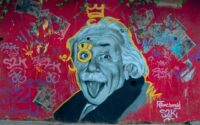Genghis Khan Was More Than a Conqueror
Nearly eight centuries have passed, yet Genghis Khan’s name remains etched in history. Ruling from 1190 to 1227, his empire stretched from Russia to China. While he was responsible for countless deaths, his unification of warring factions brought peace to a vast network of trade routes. His legacy is a tapestry of conquest and cultural fusion, still influencing the world today.
Born near Ulaanbaatar in the mid-12th century, Genghis was the third of five sons in a Mongol clan. Following his father’s death, the family, deemed too young for succession, faced years of poverty. A pivotal moment came around age 10 when he reportedly killed his half-brother with a bow and arrow, a crucial step towards leadership, as suggested by some researchers. However, this claim, particularly the age at which this occurred, is debated among historians.
Genghis rose as king of the Mongols in 1190, achieving unification with the Tatar tribes by 1206. His conquests included the Xia and Jin Dynasties in China and the Persian empire of Khwarezmia, showcasing his strategic prowess and military might.
Posthumously, his lineage continued his expansionist vision, with Korea falling in 1231 and invasions into Poland, Transylvania, and Hungary by 1241. The Mongol Empire’s zenith saw its reach from Russia to the Pacific Ocean.
Genghis Khan’s conquests were marked by extraordinary brutality. One notorious incident occurred during the Khwarezmia invasion, where after capturing Samarkand, a gruesome pyramid of severed heads was erected. This act, though well-documented, is sometimes embellished in popular retellings.
Earlier, Genghis’s attempts at establishing trade with Persia soured after the mistreatment of his emissaries, fueling his ruthless campaign. Reports suggest extensive massacres during this period, including a cruel execution of the governor who slighted his envoys. However, the extent of these massacres, including the percentage of the population killed, is often debated and may be exaggerated in some historical accounts.
Genghis Khan’s death in 1227 is shrouded in mystery. Conflicting accounts attribute it to a fall from his horse, an illness, or even a violent encounter in his harem. The story of a Tangut princess causing his death, while intriguing, is largely considered a myth.
The secrecy surrounding his final resting place adds to his mystique. Legend has it that to keep his burial site hidden, a trail of death followed his funeral procession, culminating in the mass slaughter of soldiers and guests. While this tale captures the imagination, it remains unverified, with no concrete historical evidence to support it.
What You Should Know About Genghis Khan
- Genghis Khan valued learning and knowledge. He encouraged scholars from conquered lands to gather in his empire and exchange ideas, which significantly contributed to the cultural and intellectual richness of his realm.
- Khan showed remarkable religious tolerance for his time. He exempted religious leaders from taxes, granted religious freedom within his empire, and engaged with various religious leaders, including Muslims, Buddhists, and Christians.
- He established a set of laws known as “Yassa,” which aimed to bring order and a sense of unified justice to his diverse empire. These laws included prohibitions on theft, adultery, and even littering, illustrating a comprehensive approach to governance.
- Genghis Khan developed an extensive postal system within his empire, known as the Yam. This network used relay stations to facilitate rapid communication across vast distances, significantly enhancing administrative efficiency.
- He was known for promoting individuals based on merit rather than aristocratic birth. This policy helped him build a loyal and efficient administrative and military structure.
- Genghis Khan actively promoted trade along the Silk Road. He protected the trade routes, which not only increased wealth within his empire but also facilitated cultural exchanges.
- Some historians suggest that Khan was conscious of environmental issues. He reportedly established protected hunting grounds and even implemented policies that could be viewed as early conservation efforts.
- Studies suggest that Genghis Khan’s conquests had such a profound demographic impact that they resulted in a noticeable drop in global carbon dioxide levels due to the vast depopulation of conquered areas.
- A genetic study revealed that Genghis Khan might have left a substantial genetic legacy. It’s estimated that about 0.5% of the world’s male population (around 16 million descendants) are directly related to him.
- Khan used diplomatic gifts strategically. He often gave lavish gifts to foreign dignitaries and ambassadors, a practice that was part diplomatic charm and part display of the vast wealth and resources under his control.
The Impact of Genghis Khan in History
Genghis Khan’s significance in history cannot be overstated. He and his Mongol Empire, often synonymous with tales of ferocity, created the largest contiguous land empire in history. This vast expanse, stretching from the Pacific Ocean to modern-day Hungary, was unprecedented. The reach of his empire facilitated a significant cultural and economic exchange across continents, reshaping the world in the process. His legacy is not just in the lands he conquered but also in the connections he fostered between distant peoples and cultures.
Among the Greatest Military Leaders
His military conquests were unparalleled, covering twice as much land as any other leader in history. This achievement alone places him in a unique position among military strategists. Furthermore, the leadership lessons drawn from his strategies, emphasizing agility, adaptability, and meritocracy, remain relevant in various fields, including business. His ability to unify disparate tribes under a single banner and his strategic genius in warfare mark him as one of history’s most formidable leaders.
Genghis Khan’s Prolific Military Campaigns
Genghis Khan’s life was marked by constant warfare. He led over 20 significant military campaigns, showcasing his relentless pursuit of expansion and power. Each campaign not only expanded his territory but also demonstrated his military prowess and strategic acumen. These numerous battles, often fought across diverse terrains and against various foes, solidified his reputation as a master tactician and a relentless conqueror.
The Vast Geographic Reach of Genghis Khan’s Conquests
The countries and regions conquered by Genghis Khan and his successors form a long list. His empire at its peak included most of modern-day Russia, China, Korea, southeast Asia, Persia, India, the Middle East, and eastern Europe. This enormous geographic span is a testament to the Mongol Empire’s military might and strategic diplomacy, influencing a wide range of cultures and economies across these regions.
Key Factors Behind Genghis Khan’s Successful Leadership
Genghis Khan’s success as a leader can be attributed to several key factors. Firstly, his ability to innovate in warfare, using strategies like mobility and psychological warfare, set him apart. Secondly, his policies of meritocracy allowed him to gather a loyal and competent team of advisors and generals. Thirdly, his diplomatic acumen, including forming alliances and using enemy weaknesses to his advantage, played a crucial role in his conquests. These factors combined made him an extraordinary leader whose impact is still studied and admired.
Genghis Khan’s Enduring Words
Genghis Khan’s famous quote, “I am the punishment of God… If you had not committed great sins, God would not have sent a punishment like me upon you,” encapsulates his self-perception and the fear he instilled in his enemies. This statement reflects his belief in his destiny and divine right to conquer, a mindset that fueled his relentless campaigns and helped forge his legend.
Genghis Khan’s story is a blend of fact, legend, and controversy. His legacy, marked by both brutal conquest and significant cultural contributions, continues to fascinate and provoke debate. Understanding his impact requires sifting through layers of history and myth, a task that challenges and enriches our perspective of the past.



